Fishing can spark a world of fascination, often igniting friendly debates over the merits of using bait or lures for the best possible catch. As an experienced angler who’s cast many lines in my time, I’ve waded through these same waters and thoroughly examined both methods — even testing out the effectiveness of artificial bait in saltwater.
Through this article, we’ll navigate together through the pros and cons of each method along with sharing 17 nuggets of wisdom to help you reel in success with your chosen path – be it live bait or artificial lures.
So put on your fishing hat; an exciting journey into angling mastery is about to begin!
Key Takeaways
- Lures give you more control over the presentation and are better for catch and release fishing, while bait is user-friendly and easy to use.
- Lures can be more expensive but are less messy and easier to store compared to live bait.
- When choosing between bait and lures, consider factors such as the type of fish you’re targeting, fishing conditions like water clarity and weather, as well as your personal preference and skill level.
- To master using bait or lures, experiment with different types, pay attention to water conditions, vary your presentation techniques, be patient and observant, keep track of your catches, practice proper casting techniques, clean your gear after every trip.
Pros and Cons of Using Lures
fishing gear.” title=”A fisherman holds a colorful fishing lure surrounded by various types of lures and fishing gear.” class=”awimage” />
Lures offer more control over the presentation and are better for catch and release, but they can be more expensive than bait while also being less messy and easier to store.
More control over the presentation
Lures give you more power over how your fishing looks. By using lures, you can show fish exactly what you want them to see. This is what we mean by “control over the presentation”.
You decide on the speed of the lure in water. You choose when it stops or turns. Mastery skills are needed here though! They help to make the lure work like a real fish. It then becomes easy for fish to fall for this trick! Using lures also shows your angler skills.
This makes fishing fun and exciting!
Better for catch and release
Using lures is good for catch and release fishing. Lures increase the survival rate of fish. They hook fish in the jaws, lips, or mouth. This makes it easy to get the hook out without hurting the fish too much.
Bait can be bad for catch and release fishing because it hooks fish deeply sometimes. Many deeply hooked fish do not live after going back into water.
Lure design plays a big role too. Some lures are made to look like what certain types of fish eat so you can target that species more. This means you are less likely to catch unwanted kinds of fish that get hurt by accident.
Can be more expensive
Lures can cost more than bait. Collecting them can be an expensive hobby too. High-quality lures that look very real come at a price. You also need to buy extras when you lose some or they wear out.
So, the money you spend on trips to the store adds up over time.
Less messy and easier to store
Lures are a great option for fishing because they are less messy and easier to store compared to live bait. With lures, you don’t have to deal with all the slimy and smelly mess that comes with using live bait.
Instead, you can simply keep your lures neatly organized in tackle boxes or other fishing gear. This makes it much more convenient when you’re on the go and want to quickly grab your fishing supplies.
Plus, since lures are made of plastics or metals, they won’t spoil or go bad like live bait would. So if you prefer a cleaner and more organized fishing experience, lures might be the better choice for you.
Pros and Cons of Using Bait
Using bait has its advantages and disadvantages. It is user-friendly and easy to use, making it a great choice for beginners. Additionally, bait works on different senses of the fish, increasing your chances of attracting them.
However, using bait can be messier and more challenging to store compared to lures. To explore these pros and cons in-depth and discover tips for mastering both techniques, keep reading!
User-friendly and easy to use
Using bait is a great choice for those who are new to fishing or prefer a more relaxed experience. It’s user-friendly and easy to use because all you have to do is cast out the bait and reel it in.
There’s no need for complicated techniques or special skills. Bait fishing allows you to focus on enjoying the process and the tranquility of being out on the water. Plus, some artificial lures like crankbaits are also considered user-friendly options if you’re interested in trying out something other than traditional bait.
So whether you’re a beginner or just want simplicity, using bait is definitely a user-friendly choice when it comes to fishing.
Additionally, using bait can be an effective way to attract fish because it appeals to their natural senses. The smell, taste, and texture of the bait entice fish and encourage them to bite.
This means that even if you don’t have much experience or advanced fishing skills, using bait increases your chances of success. You can easily experiment with different types of baits based on the type of fish you’re targeting or personal preference.
Can be cheaper
Bait can be a more affordable option when compared to lures. While good quality lures can be quite expensive, bait is often cheaper in the long run. You don’t have to spend as much money on buying artificial fishing lures or attractants and scents.
Plus, if you’re able to find bait in nature, it can even be obtained for free! So if you’re looking for a budget-friendly alternative, bait is definitely worth considering. It’s a cost-effective choice that still gets the job done without breaking the bank.
Works on different senses of the fish
Bait and lures are both effective in catching fish, but they work in different ways. Bait appeals to the fish’s senses of smell and taste, while lures attract them visually or by imitating movement.
This means that bait can be especially useful when you want to target species that rely heavily on their sense of smell, like catfish or carp. On the other hand, lures are great for fooling fish into thinking they’re seeing real prey, which works well with species that are more visual hunters, such as bass or trout.
By understanding how different senses play a role in fishing, you can choose whether to use bait or lures based on the type of fish you’re targeting and increase your chances of success.
Factors to Consider When Choosing Between Bait and Lures
Consider the type of fish you’re targeting, fishing conditions like water clarity and weather, as well as your personal preference and skill level when deciding between bait and lures.
Type of fish you’re targeting
When targeting different types of fish, it’s important to consider their feeding behaviors and preferences. For example, some fish species like bass are more likely to be attracted to lures, while others like catfish may prefer live bait.
Knowing the natural food source of the fish you’re targeting can help you choose the right type of bait or lure that mimics their prey. Additionally, if you’re fishing for bottom-dwelling fish or in areas with limited visibility, using bait may be more effective.
On the other hand, if you need to cover larger areas of water or target fish that are actively feeding on the surface, lures can be a better choice. It’s all about understanding your target species and selecting the method that will best attract them based on their behavior and habitat.
Fishing conditions (water clarity, weather)
When it comes to fishing conditions, the clarity of the water and the weather play a big role in determining whether to use bait or lures. Clear waters are better for using lures because they can be easily seen by fish.
On the other hand, if the water is cloudy, it’s best to use live bait as it can still attract fish even if visibility is low. Additionally, different types of fish may prefer certain water conditions, so it’s important to consider their preferences when choosing between bait and lures.
So, keep an eye on the water clarity and weather before deciding which fishing method to go with!
Personal preference and skill level
When it comes to choosing between bait and lures, personal preference and skill level are important factors to consider. Some anglers may prefer one method over the other based on their fishing technique or what they feel most comfortable using.
For those with more technical skill and knowledge of different bait fishing techniques, using bait might be a better option. On the other hand, if you enjoy active participation in your fishing experience and have good knowledge of lure fishing techniques, using lures could be a great choice for you.
Ultimately, it’s up to you to decide which method works best for your style and level of expertise in fishing.
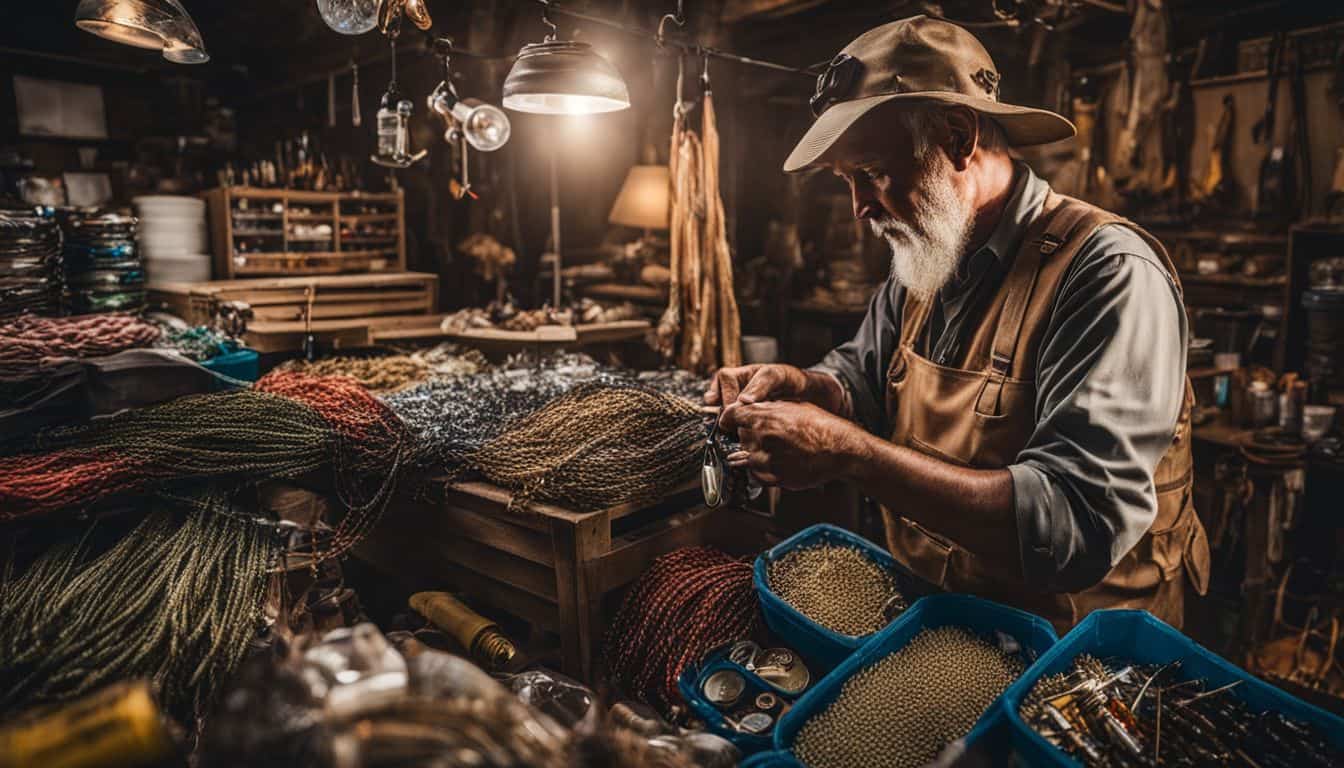
Mastery Tips for Using Bait vs. Lures
Here are some tips to help you master the use of bait and lures for fishing:
1. Experiment with different types of bait and lures to see which ones work best for you and the fish species you’re targeting.
2. Pay attention to the water conditions, such as clarity and temperature, as this can affect the effectiveness of both bait and lures.
3. Vary your presentation techniques when using bait or lures. For example, try different retrieval speeds or movements to make your bait or lure more enticing to fish.
4. Be patient and observant while fishing with bait or lures. Watch for any signs of fish activity, such as ripples on the water’s surface or birds diving into the water.
5. Keep track of your catches using a fishing log or journal. This can help you determine which baits or lures were successful in certain situations.
6. Practice proper casting techniques when using both bait and lures to ensure accurate placement near potential fish hiding spots.
7.Clean your gear after every trip by rinsing it with freshwater to remove any dirt, debris, or saltwater residue that could damage your equipment.
Remember these mastery tips while using either bait or lures can help increase your chances of catching more fish!
When to Use Bait
When to Use Bait: Discover the best situations and effective tips for using bait effectively. Whether you’re targeting bottom-dwelling fish or fishing in tough weather conditions, bait can be your secret weapon.
Don’t miss out on these valuable insights and techniques! Read more now.
Tips for using bait effectively
When fishing with bait, there are a few tips that can help you be more successful in attracting fish. Here are some things to keep in mind:
- Choose the right bait: Different fish species are attracted to different types of bait. Do some research or ask local anglers to find out what bait works best for your target fish.
- Use fresh bait: Fish are more likely to be attracted to fresh bait that smells and looks appealing. Avoid using old or spoiled bait if possible.
- Properly handle the bait: When handling bait, avoid touching it with bare hands as the smell of human scent can repel fish. Instead, use gloves or a cloth to handle the bait.
- Rig your bait correctly: Depending on the type of fishing you’re doing, there are different ways to rig your bait for optimal presentation and attraction. Consult fishing guides or experienced anglers for advice on how to properly rig your chosen bait.
- Experiment with presentation: Sometimes, simply dropping your bait into the water isn’t enough to entice a bite. Try different techniques like twitching or jerking your line to mimic live prey and attract fish’s attention.
- Consider using scent attractants: Adding scents like fish oils or attractant gels to your bait can make it even more enticing for fish. Experiment with different scents and see what works best for you.
- Be patient and observant: Fishing with bait requires patience and observation skills. Keep an eye on any signs of activity in the water and be prepared to adjust your technique or change locations if needed.
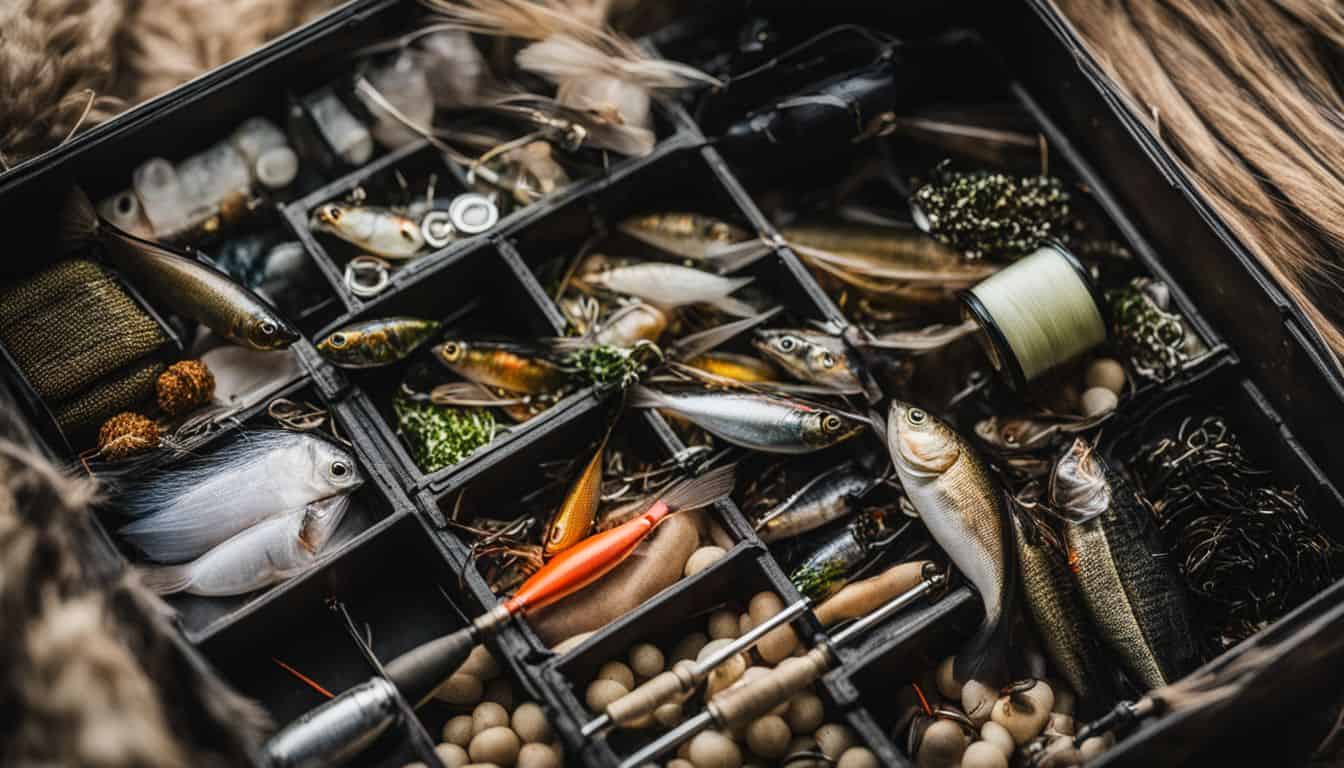
Situations where bait is the better choice
When fishing in certain situations, using bait can be more effective than using lures. Here are some situations where bait is the better choice:
- Fishing in heavily vegetated areas: Bait can be more successful in attracting fish hiding among the plants where lures may get snagged.
- Fishing in murky or muddy water: Bait produces scent and taste that can help fish locate it even when visibility is low.
- Targeting bottom-dwelling species: Certain fish like catfish and carp prefer feeding on bait that is sitting on the bottom of the water.
- Fishing for larger fish: Big predatory fish may be enticed by live or cut bait due to its natural movement and scent.
- Slow fishing conditions: When fish are less active or not responding well to lures, using bait can increase your chances of getting a bite.
When to Use Lures
Lures are particularly effective when fish are actively feeding and searching for prey. They can be used to cover large areas of water quickly, making them ideal for exploring new fishing spots.
Explore the different types of lures and master the techniques to increase your chances of success in catching that trophy fish.
Tips for using lures effectively
Using lures can be a great way to catch fish. Here are some tips to help you use lures effectively:
- Choose the right lure for the type of fish you’re targeting. Different lures work better for different fish, so do your research before heading out.
- Pay attention to the size and color of your lure. Match the lure size to the size of the fish you want to catch, and choose colors that mimic their natural prey.
- Use a variety of techniques when retrieving your lure. Experiment with fast and slow retrieves, jerking motions, or pauses to mimic the movement of real prey.
- Cast your lure near structure or areas where fish are likely to hide, such as rocks, logs, or weed beds. This increases your chances of attracting a bite.
- Keep an eye on the water temperature and adjust your fishing tactics accordingly. Fish are more active in warmer water, so try using faster retrieves or more aggressive lure movements.
- Don’t be afraid to change lures if you’re not getting any bites. Sometimes fish can be picky, so switching up your presentation might be all it takes to entice them.
- Pay attention to how other anglers are using their lures. If you see someone having success with a particular technique or lure, give it a try yourself.
- Practice patience and persistence when using lures. It may take some time before you start getting bites, but don’t give up too quickly.
Situations where lures are the better choice
In my experience, there are certain situations where using lures can be more effective than bait. Here are some instances where lures tend to work better:
- When fish are actively feeding: Lures can mimic the movement and appearance of prey, making them an enticing option when fish are in a feeding frenzy.
- In clear water conditions: Lures are highly visible and can attract fish from a distance in clear water, increasing your chances of a strike.
- When targeting aggressive species: Predatory fish like bass or pike often go after fast-moving prey. Using lures that imitate their natural food source can trigger their predatory instincts.
- When fishing in heavy cover: Bait may get snagged easily in vegetation or underwater obstacles, but lures can be maneuvered around these obstacles more effectively.
- When you want to cover larger areas quickly: Casting and retrieving lures allows you to cover more water in less time, increasing your chances of finding active fish.
Techniques for Using Bait
Learn the best techniques for using bait, including bottom fishing and float fishing, to increase your chances of a successful catch. Read on to discover these essential tips and become a master angler in no time!
Bottom fishing with bait
When it comes to bottom fishing with bait, there are a few important things to know. This technique requires skill and knowledge of different fishing techniques. Understanding fish behavior and knowing how to properly cast your line are key factors for success.
Live bait can be especially effective because it attracts more fish in less time compared to artificial lures. It’s also worth mentioning that live bait fishing may work better for certain fish species or environments.
So if you’re looking to catch some big ones at the bottom, using bait could be a great choice!
Float fishing with bait
When it comes to fishing, one technique that I find really effective is float fishing with bait. This method involves using a float, also known as a bobber, to suspend your bait at a certain depth in the water.
The idea is that the bait will be more visible to the fish and entice them to bite.
One of the main advantages of float fishing with bait is that it offers a lot of fishing action. As you watch your float on the surface of the water, any movement or sudden disappearance can indicate that a fish has taken your bait.
It adds an element of excitement and anticipation to your fishing experience.
Another benefit is that this technique works well with live bait. Live bait, such as worms or minnows, can be very attractive to fish because they are natural food sources. By suspending live bait under your float, you increase its visibility and make it harder for fish to resist.
Techniques for Using Lures
Mastering the art of using lures is essential for any angler looking to reel in a big catch. From casting and retrieving to jigging, there are numerous techniques that can increase your chances of success on the water.
Read on to discover these proven techniques and take your lure fishing skills to the next level.
Casting and retrieving lures
Casting and retrieving lures is an effective technique in fishing. It involves using artificial bait to attract fish. The key to success is understanding fish behavior and mastering the proper casting techniques.
When casting a lure, it’s important to target areas where fish are likely to be, such as near structures or along drop-offs. Adjusting the depth and speed of the retrieve can also make a difference in enticing fish to bite.
By using artificial lures, you have a greater chance of attracting certain species of fish compared to using live bait. So next time you’re out on the water, give casting and retrieving lures a try for an exciting and rewarding fishing experience!
Jigging with lures
When it comes to fishing with lures, jigging is a popular technique that can be quite effective. Jigging involves casting heavy lures or jigs into deep underwater locations near the shoreline.
This method is commonly used for catching fish in areas where they are actively feeding or hunting. By using a quick up-and-down motion, you can imitate the movement of prey and attract fish to your lure.
It’s important to choose the right size and weight of lure for the depth of water you’re fishing in, as well as for the type of fish you’re targeting. So if you’re looking to try something different while lure fishing, give jigging a go and see what kind of results you can achieve!
Factors to Consider for Conservation
Conserving fish populations and practicing sustainable fishing techniques are important factors to consider when deciding between bait and lures. By understanding the impact your fishing choices can have on the environment, you can make informed decisions that help preserve our natural resources.
Read on to discover how you can become a responsible angler and master the art of fishing with bait or lures.
Impact on fish populations
The impact on fish populations is an important factor to consider when choosing between bait and lures. Using lures can help protect bait species from being overharvested because they reduce the need for live bait.
This is beneficial for conservation efforts and helps prevent overfishing. Lure fishing also does not deplete natural prey populations, which makes it a better choice for anglers who are environmentally conscious.
However, more research is needed to understand the effects of soft plastic lure ingestion on fish populations and fisheries. Ultimately, the choice between using bait or lures depends on personal preferences, fishing goals, and conservation considerations.
Sustainable fishing practices
Sustainable fishing practices are important for the conservation of ocean and freshwater wildlife. By using these practices, we can help protect fish populations and ensure their survival for future generations.
Additionally, sustainable fishing practices can also have positive effects on the environment by reducing the use of fossil fuels and minimizing costs in fishing operations. Overfishing, which is a consequence of industrial fishing, poses a threat to many species of fish.
By practicing sustainable fishing techniques such as catch and release, using proper gear, and supporting fisheries research through the purchase of tackle, we can play our part in preserving our precious marine ecosystems.
Conclusion on Bait Vs. Lures
After exploring the pros and cons of bait and lures, as well as considering factors such as fish species, fishing conditions, and personal preference, it’s clear that there is no definitive answer to the question of which is better.
Both bait and lures have their advantages and can be effective in different situations. The key to mastery lies in understanding when to use each method and employing proper techniques.
Whether you choose live bait or artificial lures, always prioritize sustainable fishing practices for the conservation of fish populations. Happy fishing!
FAQs on Bait Vs. Lures
1. What is the difference between bait and lures?
Bait refers to live or artificial food used to attract fish, while lures are artificial objects designed to mimic prey and entice fish.
2. Which is better: bait or lures?
There is no definitive answer as both bait and lures have their advantages. It depends on factors such as the type of fish, fishing conditions, and personal preference.
3. What are some tips for mastering bait fishing?
Some tips for mastering bait fishing include using fresh and natural baits, adjusting the depth based on water temperature, using appropriate hooks and weights, and being patient while waiting for bites.
4. What are some tips for mastering lure fishing?
Some tips for mastering lure fishing include choosing the right lure based on the target fish species, experimenting with different colors and sizes, varying the retrieval speed, understanding how different types of lures work in different water conditions, and practicing casting accuracy.
5. Can I use both bait and lures together?
Yes, you can use a combination of both bait and lures during your fishing expedition to increase your chances of attracting fish.

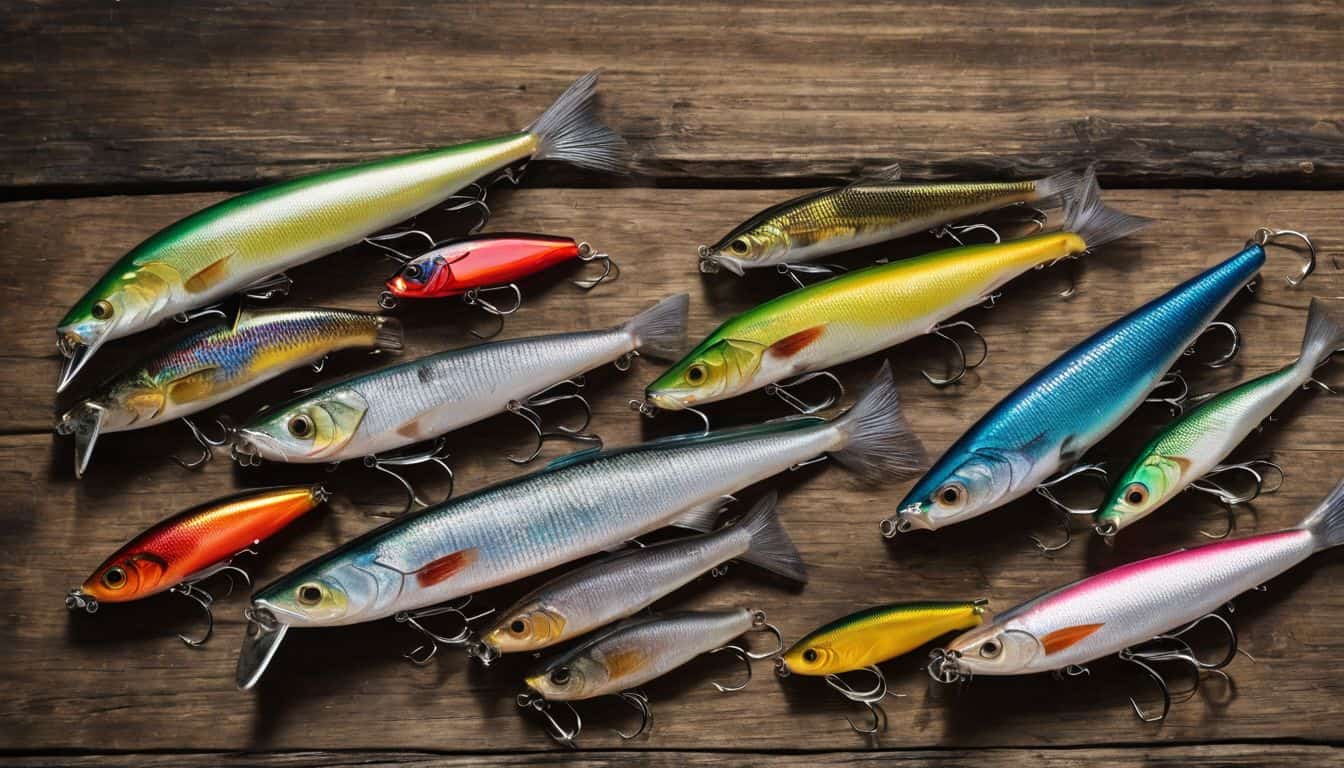
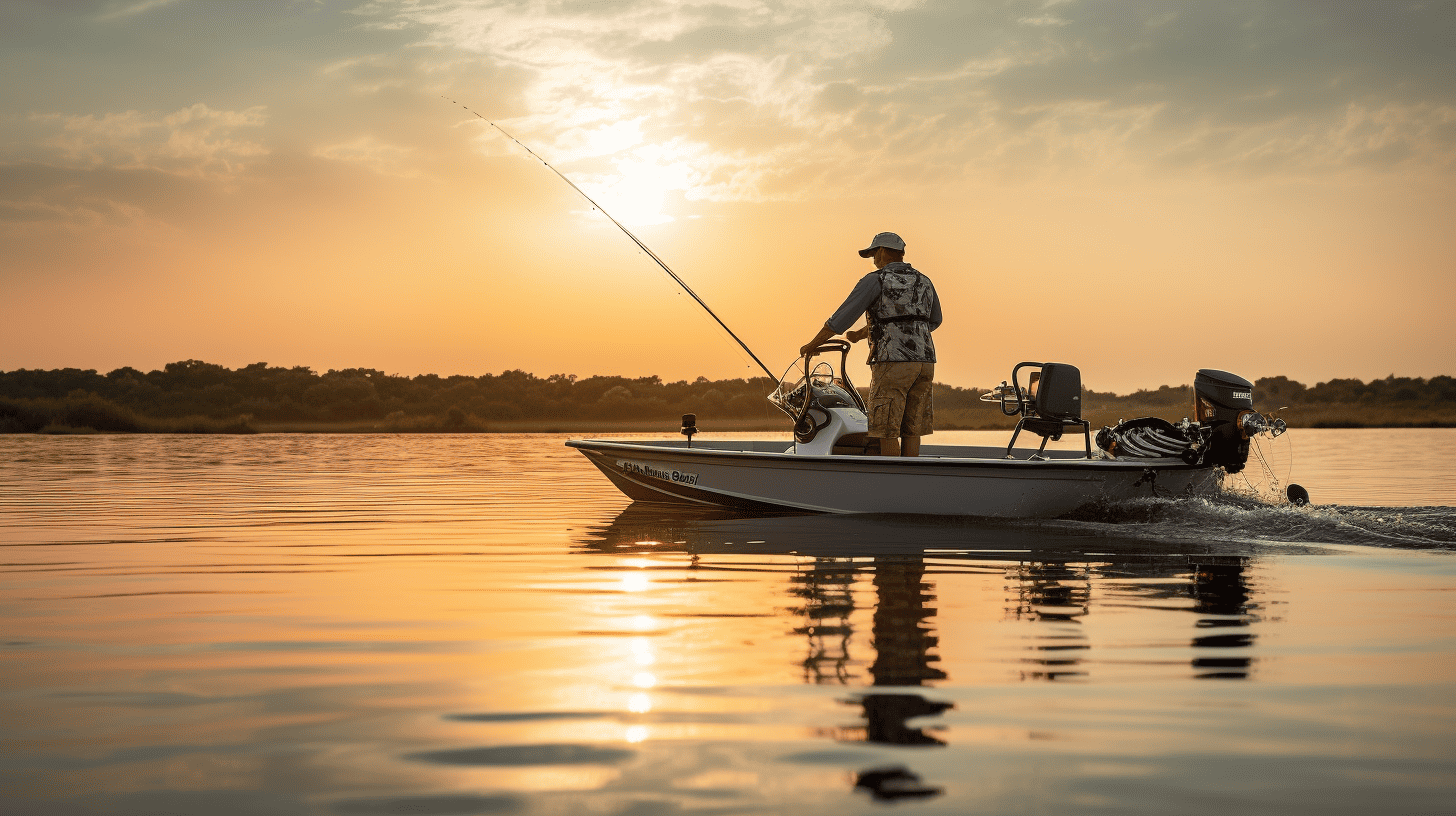

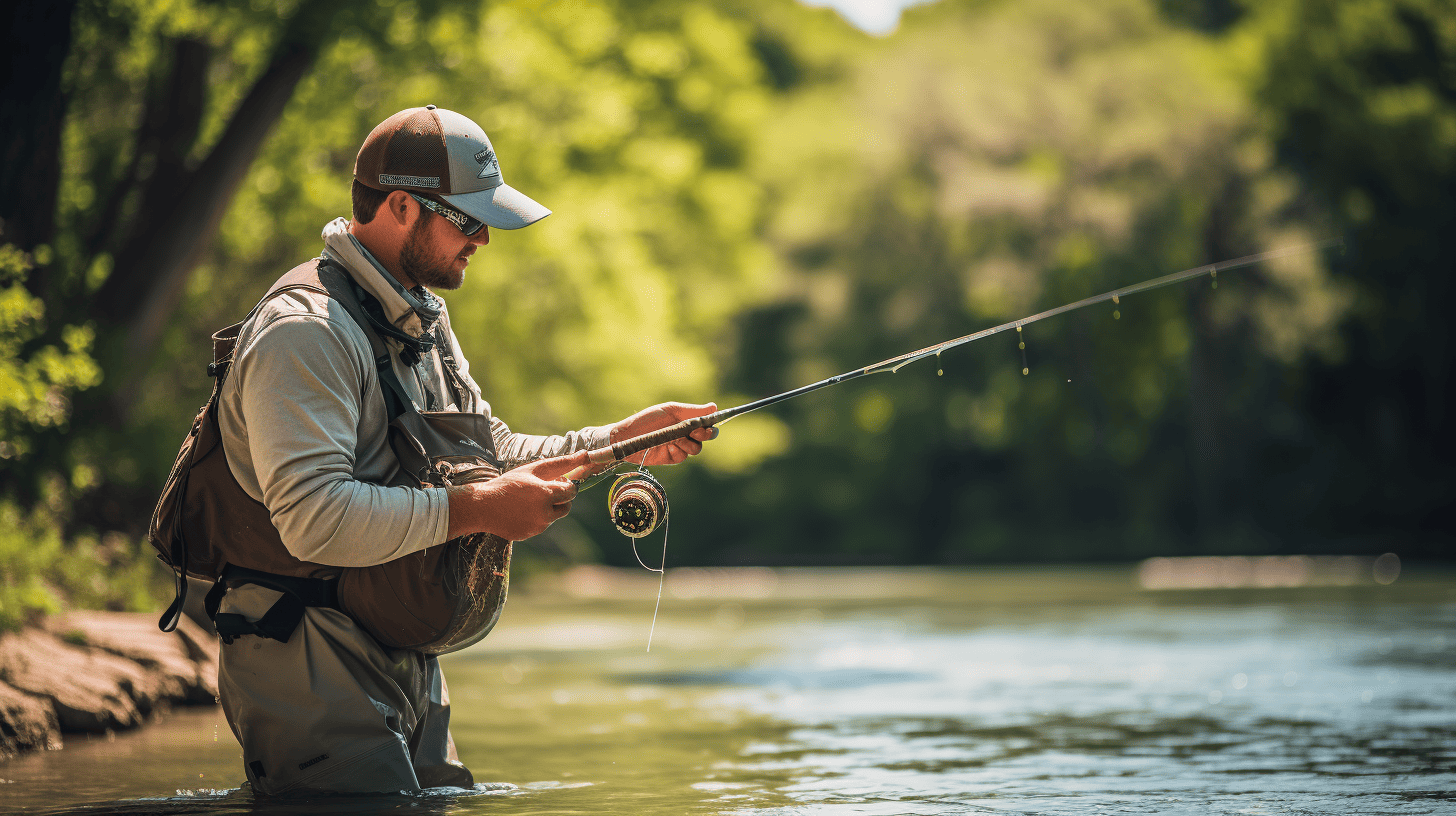
Leave a Reply